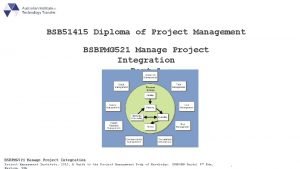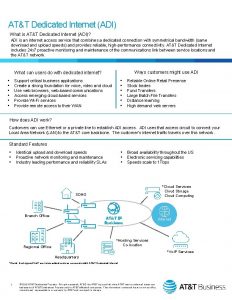Dedicated Education Units compared to Traditional Clinical Units





















- Slides: 21

Dedicated Education Units compared to Traditional Clinical Units in Undergraduate Nursing Programs Samantha Soto University of Central Florida

RESEARCH QUESTION In nursing students, how do designated education units, compared to traditional clinical units, improve student education?


SIGNIFICANCE & BACKGROUND The total number of job openings for nurses due to growth and replacements by 2022 will be an estimated 1. 05 million! Historically we have produced: 2013 = 210, 550 2012 = 194, 898 2011 = 204, 482 2010 = 197, 775 To reach the goal of 1. 05 million by 2022 we should be producing 840, 000 per year from 2014 onward.

SIGNIFICANCE & BACKGROUND Bizjournals. com Inability to meet shortage demands are further complicated by: • an aging nursing population • inability to accept qualifying applicants to programs • rising stress levels for practicing nurses • high turnover rates • shortage of faculty To alleviate faculty shortage the dedicated education unit (DEU) was created in Australia at Flinders University in 1999 by Edgecombe, Wotton, Gonda, and Mason.

SIGNIFICANCE & BACKGROUND • • • DEU Characteristics sustains its commitment to its mission of overall quality of clinical education supervises construction of future DEUs Relationships are based on collaboration and trust a clinical unit voluntarily commits to the DEU process faculty role hold 8 -16 students Clinical instructor/staff nurse mentor 1 -2 nursing students maintain an entire rotation with the same clinical instructor both formal and informal communication evaluation and quality assurance systems

Figure 1 Model of Clinical Instruction—DEU. Randles, S. , Moscato , J. , Miller, J. , Logsdon, K. , Weinberg, S. , Chorpenning, L. (2007). Dedicated Education Unit: An innovative clinical partner education model. Nursing Outlook, 55, 31 – 37. Retrieved from: http: //dx. doi. org/10. 1016/j. outlook. 2006. 11. 001

METHODS (DATABASES) • CINAHL Plus with Full Text • Alt Health Watch • Biological Abstracts 1969 – Present • Cochrane Central Register of Controlled Trials • Cochrane Database of Systematic Reviews • Cochrane Methodology Register • Database of Abstracts of Reviews of Effects • ERIC • Health and Psychosocial Instruments • Health Source - Consumer Edition • Health Source: Nursing/Academic Edition • Health Technology Assessments • MEDLINE • Psyc. ARTICLES • Psyc. BOOKS • Psyc. INFO • SPORTDiscus • Academic Search Premier

METHODS Key words dedicated education unit, dedicated learning unit, and clinical Inclusion criteria • studies published from 2004 to present day • studies must be of the nursing discipline • nursing studies utilizing the DEU with both quantitative and qualitative results. Exclusion criteria • articles of other health professions • any nursing study articles that did not describe enhancement of learning via the DEU • online programs

METHODS • Number of articles: 38 from final search, 15 met criteria for ILR • Total sample size: 2052 participants consisting of 1673 nursing students, 277 staff nurses/clinical instructors, 43 clinical faculty, 12 nurse administrators, 35 nurse managers, and 12 university faculty administrators • Number and levels of evidence: six level 6 case reports, four level 4 cohort studies, three level 3 controlled trials, and two level 2 random control trials (RCT).

FINDINGS Theme #1: Environment • Six of the studies entered in this ILR discussed or proposed discussion regarding the learning environment. Phrases such as, “impact on ward, ” “learning environment, ” “learning atmosphere of the unit, ” “environment of the DEU” were mentioned. • One student stated “you actually forgot you were a student because you felt so welcome. ” Another student nurse voiced this comment, “there was a lot of respect given to you even though you were a student nurse they didn’t actually see you as a student nurse, you were a nurse in the process of learning. You were respected and made part of the team. ”

FINDINGS Theme #1: Environment Nashioka, Coe, Hanita, & Moscato, 2014 reported statistics for student nurses for “learning atmosphere of the unit” between the DEU and TCU were: • DEU n=518, 5. 09(0. 72) M(SD) • TCU n=525 4. 55(0. 91) • z=2. 17, p<. 03 • g = 0. 645 • SEa=0. 428(0. 198) Although the DEU sample is smaller, its mean is greater than that of the TCU. The SD is greater for the TCU indicating greater variance of that particular sample. Hedges g was also performed indicating a large effect. Test statistic p indicating a strong presumption against null hypothesis

FINDINGS Theme #2: Clinical skill development Assessment skills Mulready-Shick, Flanagan, Banister, Mylott, and Curtin (2013) where students from both the DEU and traditional clinical setting were both surveyed for: growth in nursing knowledge DEU M=4. 78, TCU M=4. 30; F=18. 72; p<0. 01 *on a scale ranging from 1=no growth to 5= a great deal of growth in clinical skills development DEU M=4. 76, TCU M=4. 13; F=26. 95; p<0. 01 growth in ethical and professional behavior development DEU M=4. 66, TCU M=4. 22; F=12. 11; p<0. 01

FINDINGS Theme #2: Clinical skill development Development of social skills in clinical environment Moore & Nahigian (2013) surveyed using a 4 point Likert-type scale with 1=strongly disagree to 4=strongly agree. Results were: • shared processes DEU students rated this domain higher than nursing students in TCU setting (p=0. 01). • conflict management DEU students perceived that best possible solutions were achieved (p=0. 01). • communication one item titled “I can think of times when I received incorrect information from nurses on this unit” where nursing students from the TCU scored higher (p=0. 01). • coordination DEU students scored higher for “there are written evidence-based treatment protocols” than nursing students in the TCU setting

FINDINGS Theme #3: QSEN Competencies Mulready-Shick et al (2013) report on a rating scale (1 = never to 4 = very often) where DEU students had more opportunities to develop 4 of the 6 QSEN competencies: • Teamwork and Collaboration DEU score is 4. 78 and TCU students 4. 53 (F=6. 68; p<0. 01) • Informatics DEU score is 4. 56 and TCU students 4. 00 (F=21. 82; p<0. 01) • Quality Improvement DEU score is 4. 59 and TCU students 4. 22 (F=10. 44; p<0. 01) • Safety DEU score is 4. 95 and TCU students 4. 82 (F=3. 15, p<0. 01)

GAPS & LIMITATIONS • cost analysis • funding of the DEU and future construction should be approached with caution. • limitations of sample size within individual studies were noted • lack of randomization in the student sample • lack of control group • lack of historical data • inconsistencies with selection of clinical instructors • inconsistent information as to whether relationships had already been established between hospitals and nursing schools. • some DEUs had already been established for several semesters while others being tested were new. • QSEN logs displayed redundancies in some domains

RECOMMENDATIONS Recommendation #1, Level A: Enhancement of Clinical Environment • To obtain and maintain an excellent standard of education and to enhance the clinical environment, it is recommended certification, accreditation, and regulation be conducted of each DEU through an applicable board. • Understanding the Code of Ethics for Nursing established by the American Nurses Association (ANA) • Student nurses need to know and understand the Nurses’ Bill of Rights also established by the ANA (2014).

RECOMMENDATIONS • • Recommendation #2, Level A: Enhance DEU curriculum Establishing a routine, time management, prioritization, organization, delegation, and team work all go hand in hand. The DEU curriculum should include assessment, diagnosis, outcomes and planning, implementation and evaluation Satisfactory demonstration with a side by side clinical instructor that questions and teaches the nursing student regarding assessment within its context offers an improvement to the TCU Whether formative or summative, evaluations can provide evidence to facilitate curricular changes in this setting.

RECOMMENDATIONS Recommendation #3, Level A: Development of DEU Instructors • Certification would offer standardization and assumes a level of knowledge • learn teaching strategies for the clinical environment, how to identify learner needs • Benner, Sutphen, Leonard, & Day’s (2010) Four Essential Shifts for Integration should be incorporated in the development of clinical instructors.

FUTURE QUESTIONS • • Many questions exist for future investigation such as: what type of investment is required? does the DEU increase profits to a hospital? should the investment be viewed as short term or long term? How does the DEU affect NCLEX scores? www. news. uic. edu

CONCLUSIONS Leannthieman. com • • • provides an improved clinical environment for nursing students to practice and learn Nursing students in the DEU setting make positive reports on many levels, however the differences in how well DEU students assimilate data compared to TCU nursing students would require further quantitative research. increases the capability for a clinical faculty member to address up to 18 nursing students, ameliorating nursing shortage encourages bedside nurses to be part of the formation of new colleagues, including them in the process of integration, increasing their value to the profession of nursing and self. Nurse educators should advocate for the development of future DEUs and continue evaluation of its design, implementation, curriculum, and effectiveness. pioneers and promotes collegiality between nurses at all levels and from different arenas.
 Clinical simulations in nursing education
Clinical simulations in nursing education Transforming teacher education through clinical practice
Transforming teacher education through clinical practice American value system
American value system K
K When units manufactured exceed units sold:
When units manufactured exceed units sold: Consuelo ortiga y rey
Consuelo ortiga y rey Romeo and juliet blurb
Romeo and juliet blurb Dedicated processor assignment
Dedicated processor assignment General purpose computer system
General purpose computer system Dumatec
Dumatec Dedicated fulfillment
Dedicated fulfillment Bsbpmg521
Bsbpmg521 At&t adi with managed router
At&t adi with managed router Antonios vlassis
Antonios vlassis Vodafone cloud host
Vodafone cloud host Introduction to wan
Introduction to wan Enterprise dedicated network
Enterprise dedicated network Contoh dedicated it system di atas kapal
Contoh dedicated it system di atas kapal Contoh dedicated it system
Contoh dedicated it system Sel manufaktur
Sel manufaktur Insurance dedicated fund
Insurance dedicated fund Dedicated defined benefit services llc
Dedicated defined benefit services llc







































